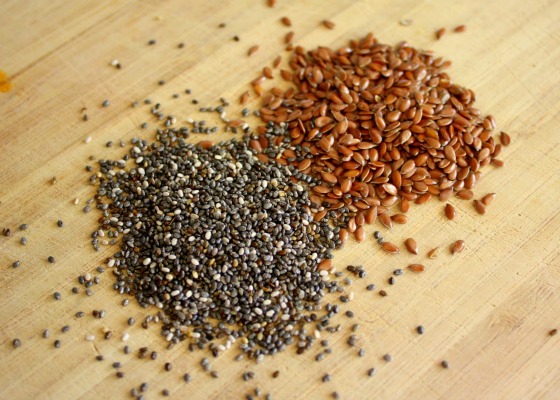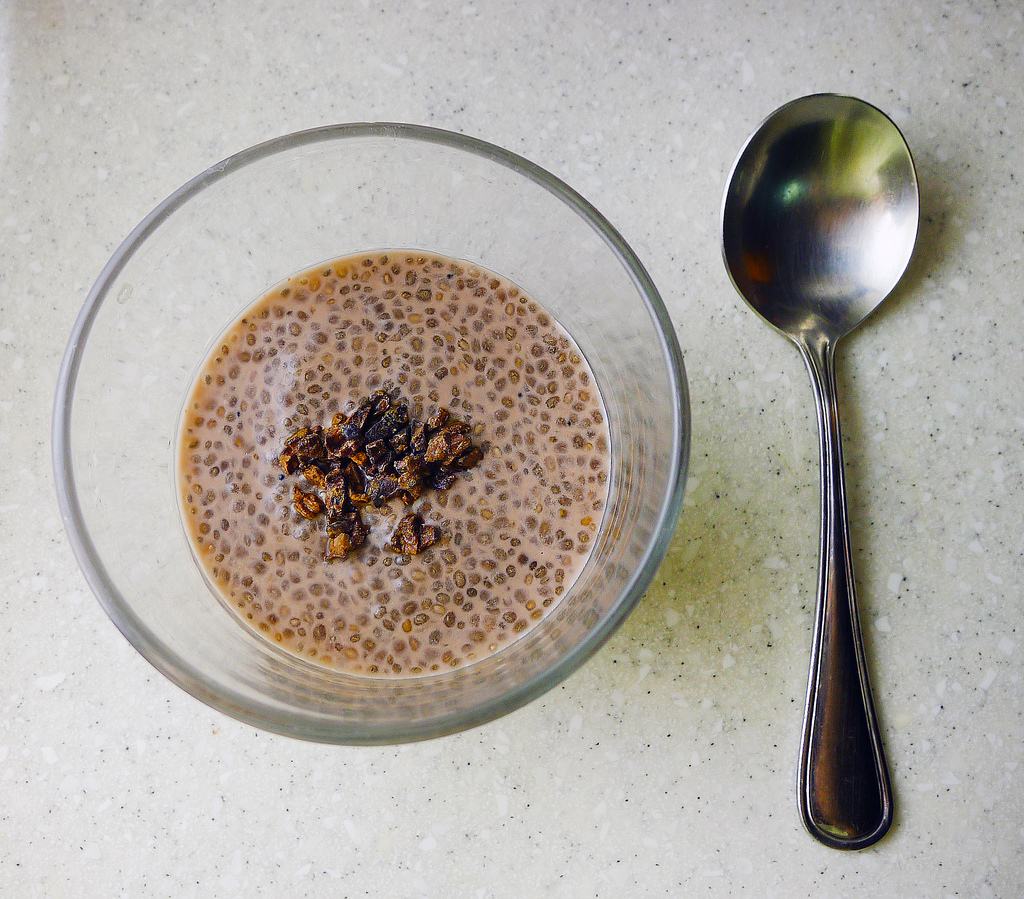
Flaxseeds Vs. Chia Seeds: Which is Better? (And Recipes for Both)
On my most recent trips to Whole Foods, I noticed flax seeds and chia seeds everywhere, from packaged foods like healthy “chips” and mixed into smoothies and artisan breads alike. But what are the nutritional differences (and benefits) of these two seeds?
Chia Seeds: Mineral-rich fiber Yum-bombs
When the word chia comes to mind, people immediately think of the awesome 80’s chia pet. But chia, AKA “salvia hispanica” comes from a Latin American plant. Why is it such a great food? First, it’s fiber-rich; fiber plays an integral role in the body detox process and it’s also filling, which can lead to weight loss (the fiber helps you feel satisfied by slowing down the digestion process, which reduces cravings throughout the day).
A high mineral content is an additional plus found in chia seeds; they contain phosphorus, calcium, magnesium, iron, zinc, and copper. Chia seeds are also high in antioxidants and they contain omega-3 fatty acids, which prevent inflammation (like arthritis and blood clots). Omega-3 fatty acids also help sustain a healthy brain and nervous system function. A few teaspoons of chia daily—added to yogurt, cereal, smoothies, and juices—can deliver these benefits. Did I mention that Chia is super-tasty?
We love this recipe from Peanut Butter Fingers
Chia Seed Smoothie Bowl
Perfect for a hot summer day, this smoothie bowl includes both fruit and vegetables, all under the guise of a creamy, cold chocolate treat.
Ingredients:
Serves One
1 1/4 c. almond milk (or milk of choice)
1 scoop chocolate protein powder
1 c. frozen strawberries
1/2 frozen banana
1 tbsp. cocoa powder
1 tsp. xanthan gum (optional – adds thickness)
1 tbsp. chia seeds (plus more for garnish)
1 large handful fresh spinach
Directions:
Pour almond milk into blender and top with remaining ingredients. Blend on high until smooth, thick texture is achieved. Pour into a bowl, garnish with chia seeds and enjoy.
Flaxseeds: Protein powerhouses
Like chia, flaxseeds are filled with healthy diet essentials; fatty acids, fiber, and protein. Omega- 3 fatty acids are vital to immune health since it decreases inflammation, and lowers high blood pressure and cholesterol.Flax seeds also contain plenty of fiber; both soluble and insoluble, which helps regulate the digestive system and prevent diseases. One tablespoon of flaxseeds equals two grams of fiber.
Flaxseeds also contain high levels of protein, which is uncommon for plant-based foods, so they are great for those with a vegetarian or diet. One ounce of flax seeds equals 5.1 grams of protein.
Flaxseeds can be added to soups, smoothies, cereals, stews and casseroles. When baking flaxseeds can be added to cookies, muffins, and breads. Healthy cookbook author Martha Rose Shulman told the New York Times, “Flaxseeds are harder than sesame seeds, so it’s a good idea to grind them — coarse or fine, depending on the recipe. That way, too, all the nutrition in flaxseeds is more readily available to the body. Keep what you don’t use in the refrigerator or freezer, as the oils in flaxseeds, like those in most nuts and seeds, will oxidize if not kept cold.”
Shulman adapted this recipe for the NYTimes:
Granola Bars with Chocolate
Most granola bars are too sweet for my taste, so I wasn’t much of a fan until I made these. They’re inspired by a recipe from “Good to the Grain,” by Kim Boyce, but I’ve cut down on the honey and added chocolate.
Ingredients:
3 tablespoons unsalted butter or canola oil, plus additional for the pan and for your hands
2 cups mixed flaked grain cereal or rolled oats
1/2 cup flaxseed meal
1/2 teaspoon cinnamon
1/4 teaspoon salt (optional)
1/3 cup honey or agave syrup
2 tablespoons brown sugar
1 teaspoon vanilla
1/2 cup chopped bittersweet chocolate or chocolate chips
Directions:
1. Preheat the oven to 300 degrees. Generously butter or oil a 9-by-9-inch metal or glass baking pan.
2. Melt the butter over medium heat in a wide saucepan. Add the flaked grains or oats. Stir over medium heat until the grains are lightly toasted, taking care not to let them burn. Stir until they are beginning to smell toasty and have slightly darkened, six to seven minutes. Remove from the heat, and transfer to a bowl. Add the flaxseed meal, the cinnamon and the salt. Wipe the pan clean.
3. Combine the honey, vanilla and brown sugar in the pan in which you toasted the oats. Bring to a boil over medium heat. Boil five minutes. Pour over the oat mixture, and stir until it is evenly distributed over the mixture. Allow to cool for five minutes, then stir in the chocolate pieces.
4. Scrape into the pan, and spread evenly. Place in the oven for 20 minutes. Do not allow to brown or the bars will be hard instead of chewy. Remove from the heat, and allow to cool. Cut into 16 to 20 pieces, and store in an airtight container.
Yield: Fifteen to 20 pieces.
Advance preparation: The bars will keep for a few weeks in an airtight container.
Nutritional information per serving (15 pieces): 131 calories; 3 grams saturated fat; 1 gram polyunsaturated fat; 2 grams monounsaturated fat; 6 milligrams cholesterol; 19 grams carbohydrates; 2 grams dietary fiber; 23 milligrams sodium (does not include salt to taste); 2 grams protein






